How to choose a travel yoga mat for active adventures: 5 factors to help you find your best flow on the go
Looking to keep your body in balance on active trips? Here's everything you need to find your flow
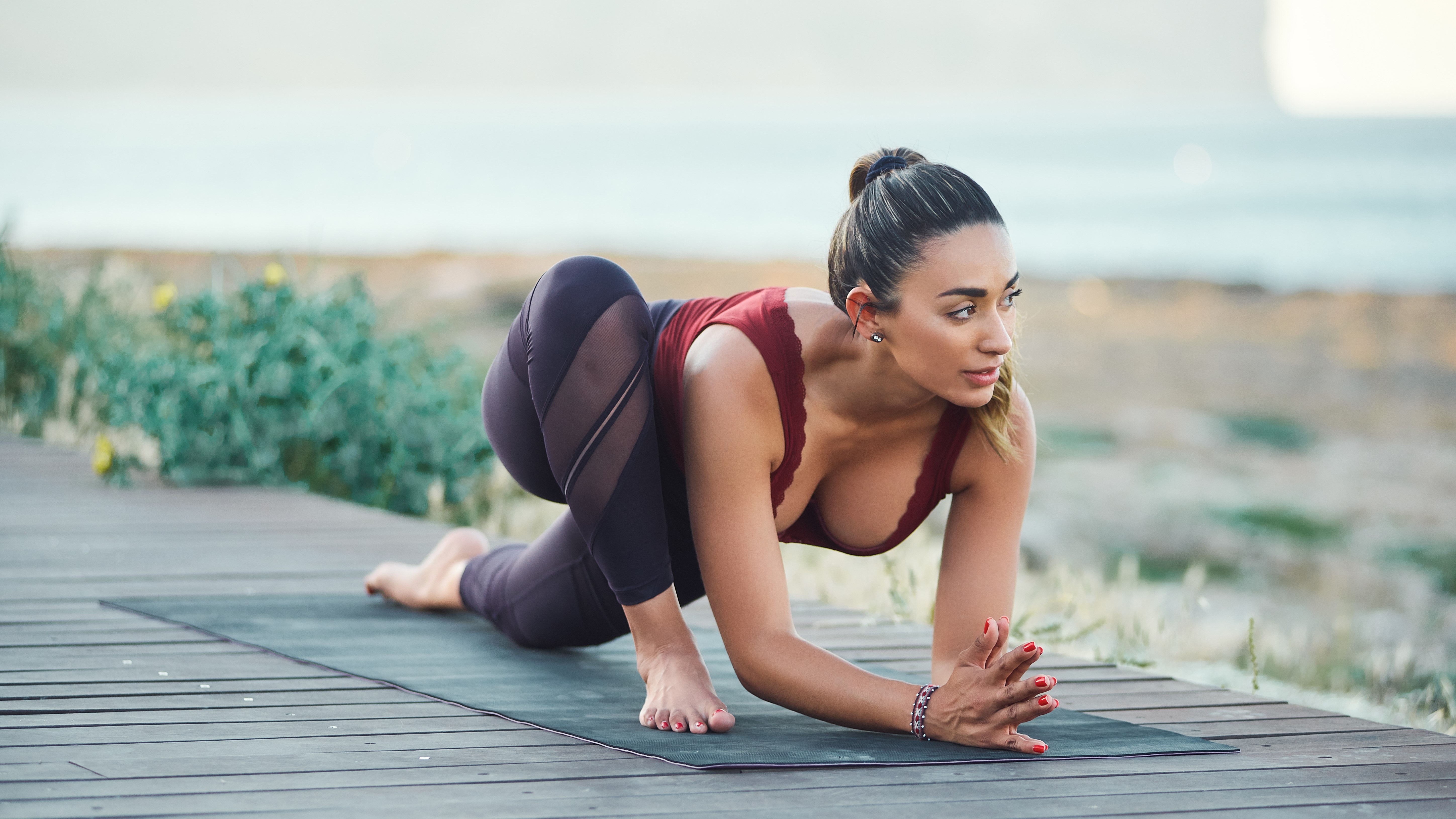
If your vacations look a lot more like hitting the trails at dawn than lounging on the beach till sunset, there’s a good chance you want to stretch it out from time to time to balance all that time in your trail running shoes or hiking boots.
Yoga for runners and hikers is a great way to keep an active body mobile and pain-free, especially when you’re traveling, which can also involve hours spent cramped on a plane and nights sleeping in uncomfortable hotel beds.
I travel a lot and I’ve been teaching yoga for 15 years so my practice comes with me everywhere I go. While I’ve done it directly on carpeted hotel room floors more times than I care to count, there’s a lot to be said for being ready to flow anywhere you go with a travel yoga mat.
The right mat means slippery hotel floors and gross carpets are no problem, and it can also mean you can easily hop in on that beach yoga class or drop into any yoga studio without using a stinky mat when you’re traveling. These days, there are tons of travel yoga mats out there, and choosing the wrong one can mean you end up more annoyed than zen. In this article, I’ll walk you how to choose a travel yoga mat based on your needs.

Types of travel yoga mat
When you’re shopping for travel yoga mats, you’ll soon discover that there are various types available. Some look pretty much like a standard studio mat made from PVC foam, only thinner and are designed to be rolled up and carried over your shoulder with a strap. However, you can also find foldable foam mats and towel designs, which have a microfiber surface and sometimes a grippy underneath usually made from rubber.
Which type you choose depends on your personal preference as well as your travel needs. Do you mind carrying your mat rolled up as a separate item from your carry-on? Do you want it to fold up and fit inside a suitcase? Or are you backpacking between huts and hostels and need something that can fit rolled up in the side pocket of your backpack?
To help you narrow down your choices, there are five main areas to consider:
All the latest inspiration, tips and guides to help you plan your next Advnture!
1. Weight
Unless you’re traveling everywhere by vehicle, if you’re going to bring your mat with you on planes and trains, the first factor you’ll want to consider is how heavy it is. All yoga mats meant for travel should be lighter than their regular counterparts, but you should know that weight is all relative. For example, my Liforme Classic Travel Yoga mat is roughly half the weight of the brand’s regular mat, but it still weighs a healthy 2.7 lbs, which might surprise you when you first pick it up.
In truth, the lightest yoga mats are either yoga towels with no rubber grip, which provide little padding and don’t always grip to the surface they’re on, or are made from PVC foam.
The foam ones tend to be less packable because they’re thicker and don’t fold as easily, but we did find some foldable ones as light as 2lbs, such as this Gaiam Yoga Mat on Amazon. Most of the really good travel yoga mats are within the 2 - 4 lb range, and lighter ones may not offer the same quality, so you’ll need to weigh up whether shedding pounds is the most important criterion, or if you want a better experience during your practice.
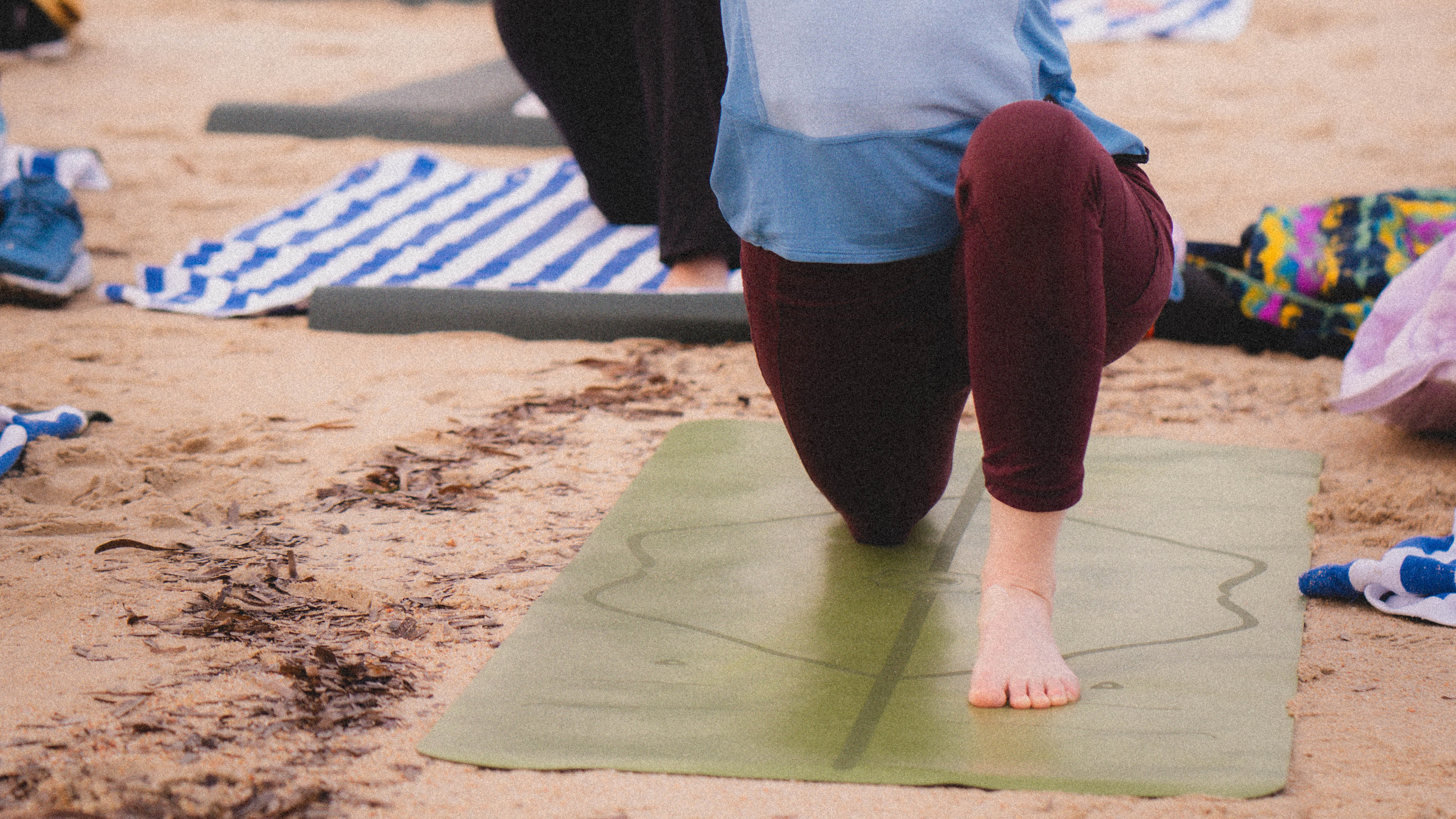
2. Thickness
Hand in hand with the weight of your mat is how thick it is. Needless to say, travel yoga mats are thinner than regular mats and with that, you should expect to sacrifice a bit of padding under your knees.
Not every yoga practitioner experiences discomfort when using a thin mat, but a thin mat on a soft wooden yoga studio floor may be different to using one on a hard tiled floor in a hotel room. If you’re planning to take your practice outside onto grassy lookouts, hiking trails and beaches, a thicker mat might provide more protection from rocks and pinecones, and may even provide more stability.
For most travel yoga mats, you’re looking at something in the realm of 1.5 - 2.5 mm of thickness, which isn’t a ton, but remember that you can always use a towel or folded fleece jacket for extra padding under any bony parts.
Sticky mats will always be thicker than towel-style versions and if you really want a thicker mat, something like the Amazon Basics mat delivers a half inch of padding for only 2 lbs of weight, while the Lululemon Lightweight Mat gives you 5mm for 3.3 lbs. These mats are not particularly portable, but they are light so may work in some travel scenarios.
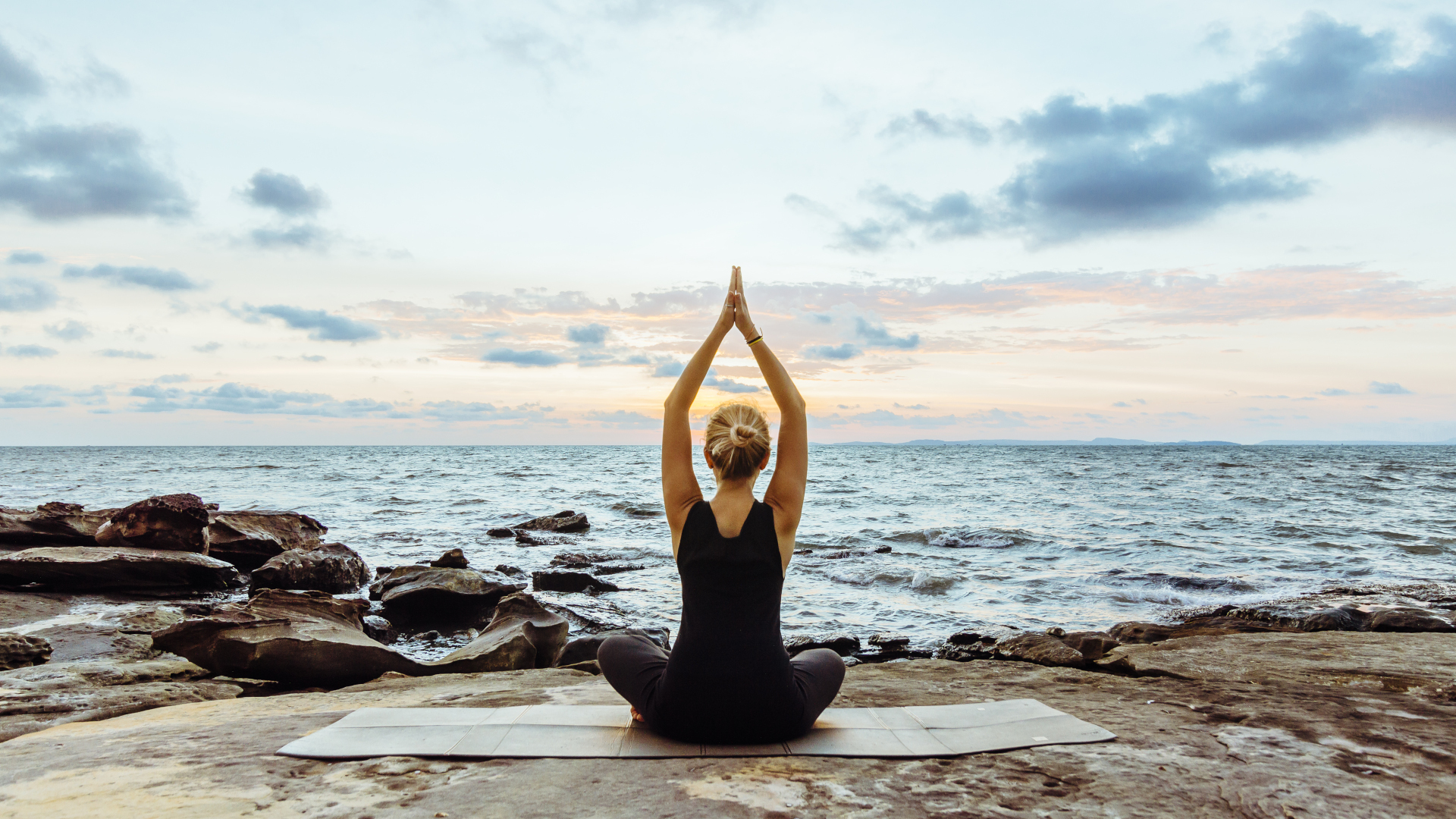
3. Packability
Next up, a good travel yoga mat should be easy to carry. A more traditional approach is a mat that simply rolls up can be carried with a strap or bag, which ideally comes included. Many airlines allow you to bring this on board in addition to your carry-on without an extra charge, but you should certainly check before you fly.
If you’re traveling with a suitcase, mats like the Lifeorme will fit rolled up inside larger suitcases, but can also be unrolled and folded to carry in smaller cases – just unroll it when you arrive so it doesn’t get creased.
The most packable options, however, are the towel-style yoga mats like my Mikkoa Travel Yoga Mat. This mat offers many of the benefits of a regular mat, with good grip and stability, but folds up so you can carry it in a suitcase or backpack.
A thinner and lighter option still would be a yoga towel such as this one by Gaiam on Amazon, which is actually designed to go on top of your regular mat. You can use it on it’s own, though it will be thin, a little stretchy and some models have grippy dots that can be a little painful on your knees. It’s not ideal, but it is your most packable option, and might even double as a micro towel for wild swimming.
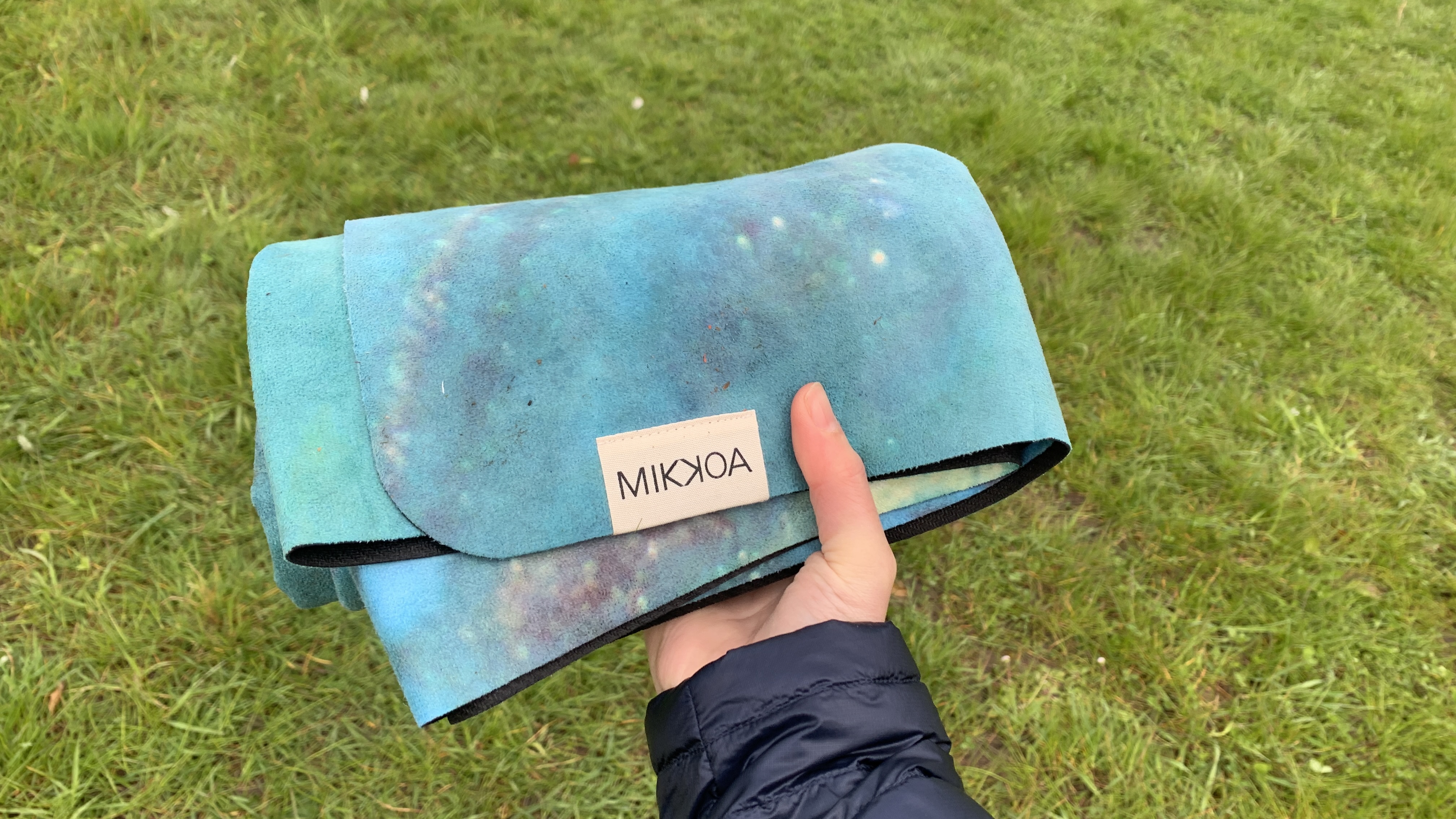
4. Grip
Nobody likes slipping and sliding around on a yoga mat, and when you’re traveling, you may well encounter sweatier conditions with heat and humidity combined with sunscreen and insect repellent, all of which can make staying put a real challenge.
However, choosing a mat based on grip is a surprisingly personal experience. We’ve found both the Liforme and Mikkoa mats to be great for grip, but others might feel their hands sliding forward on them in Downward Dog. Cheaper foam mats are often the most slippery options out there, and many mats work better if you spray them – or your hands and feet – with water before using them.
Another factor to consider is how well your mat grips to the surface you’re practicing on. Anything with a rubber underside should grip to both carpet and hard floors, while foam also does an okay job, but a straight yoga towel with no grippy underside is likely to work best for mellow stretching only.
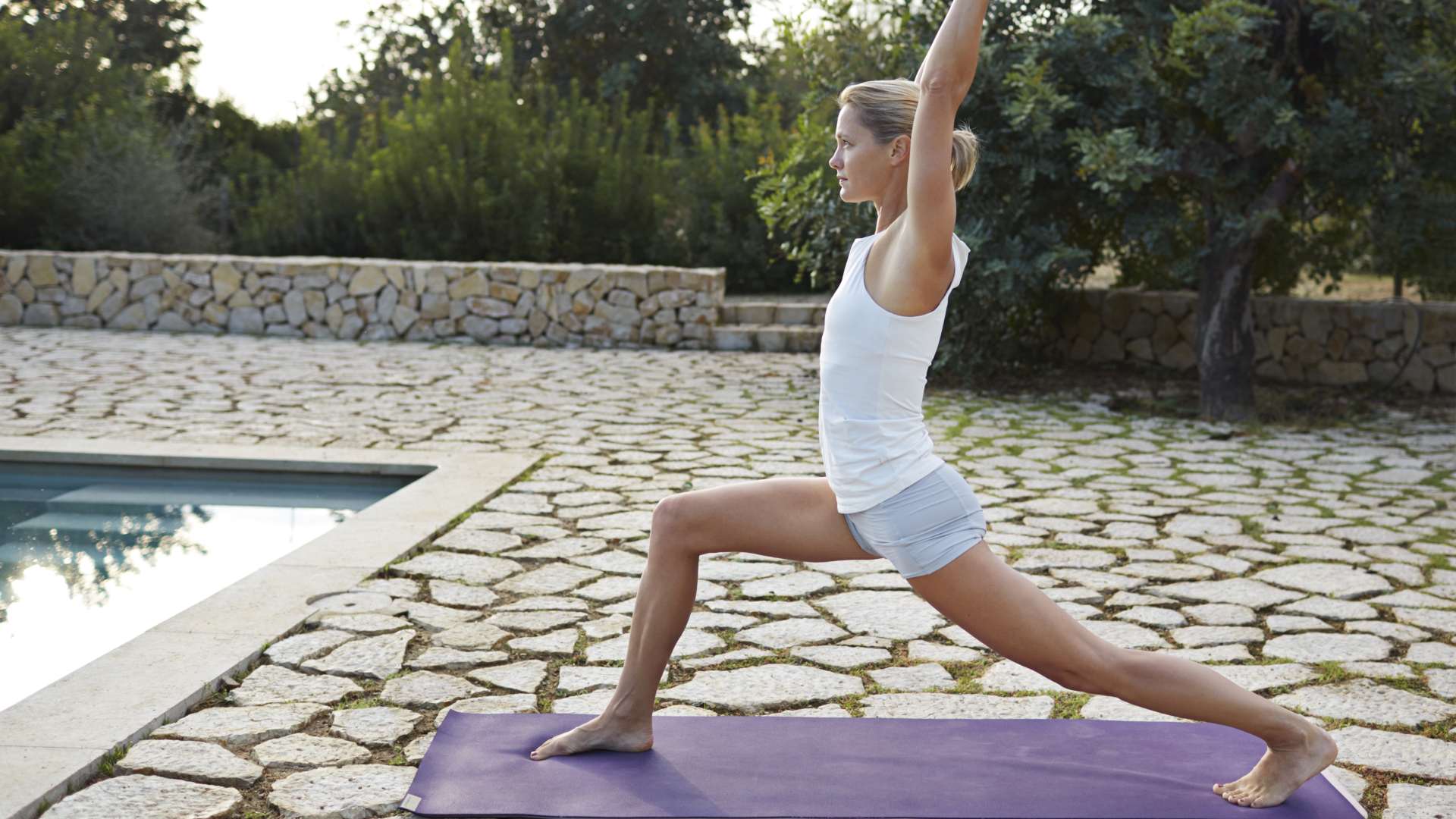
5. Maintenance
Finally, a mat that’s coming on the road with you is more likely to see sand, salt, sunscreen and grass, and for that reason it might need extra washing. Your mat should come with instructions on how to care for it, and these should be followed to prolong the life span on your mat.
However, some instructions are more complicated than others. Are you willing to spend time mixing up a non-toxic cleanser solution to spray and wipe down your mat after each use or do you want a towel-style mat that you can chuck in the washing machine when you get home?
If you don’t want to put a lot of time and effort into keeping your mat fresh, read the care instructions before you buy.
Julia Clarke is a staff writer for Advnture.com and the author of the book Restorative Yoga for Beginners. She loves to explore mountains on foot, bike, skis and belay and then recover on the the yoga mat. Julia graduated with a degree in journalism in 2004 and spent eight years working as a radio presenter in Kansas City, Vermont, Boston and New York City before discovering the joys of the Rocky Mountains. She then detoured west to Colorado and enjoyed 11 years teaching yoga in Vail before returning to her hometown of Glasgow, Scotland in 2020 to focus on family and writing.

